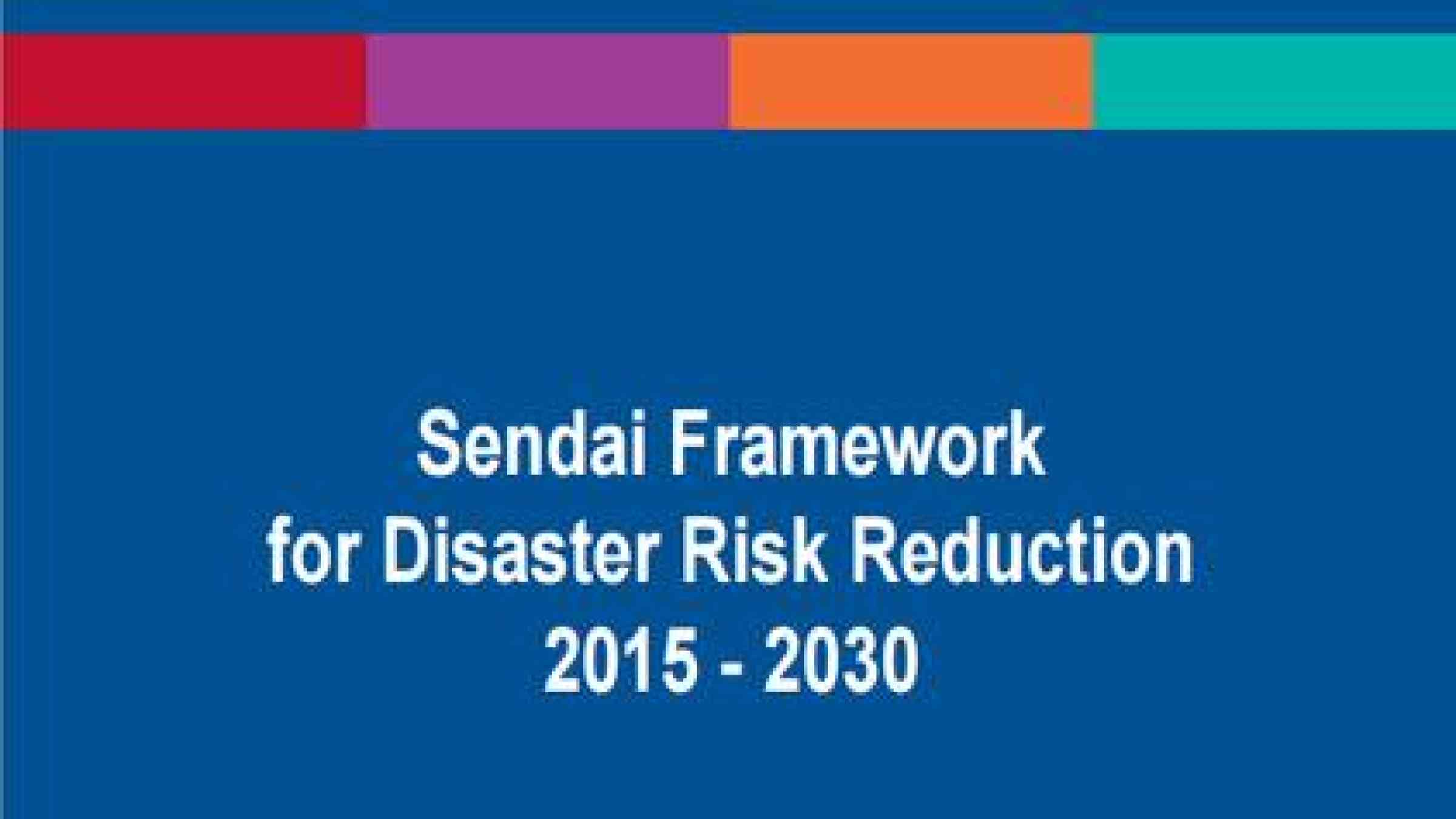Sendai Framework action under way

The Words into Action process will energize implementation of the Sendai Framework (Photo: UNISDR)
GENEVA, 18 August 2015 – UNISDR has added new momentum to the implementation of the Sendai Framework for Disaster Risk Reduction, a 15-year international plan to curb deaths and economic damage caused by natural and man-made hazards.
The 'Words into Action' process, launched today, will gather experts from around the globe to shape by the end of 2016 a series of thematic guides on how to apply the life- and asset-saving Sendai Framework. They will be an important tool to capture practice, learning and progress over the next decade and a half.
"The Sendai Framework sets the course for disaster risk reduction for the next 15 years. We now need to transform this international agreement into concrete action that will substantially reduce disaster mortality and economic losses," said UNISDR’s head Margareta Wahlström, Special Representative of the UN Secretary-General for Disaster Risk Reduction.
"'Words into Action' will be important for the Sendai Framework, offering practical guidance to support implementation, ensure engagement and ownership of action by all stakeholders, and strengthen accountability in disaster risk reduction," she added.
The 2015-2030 framework was adopted in March at the Third World Conference on Disaster Risk Reduction in the city of Sendai – a which was community hit hard by the 2011 Great East Japan Earthquake and Tsunami and but is also a model of recovery.
Despite a gradual shift over the past two decades from seeing disasters through the lens of humanitarian relief to confronting risk head on, economic losses have risen steadily, exacerbated by climate change, unbalanced urbanization and growing inequalities.
Losses from disasters such as earthquakes, tsunamis, cyclones and flooding now average US$250 billion to US$300 billion a year, according to UNISDR’s 2015 Global Assessment Report.
The Sendai Framework aims to drive better governance and understanding of risk, greater investment in resilience and enhanced preparedness for effective response, recovery, rehabilitation and reconstruction.
It hinges on seven global targets including substantial reductions in disaster mortality, numbers of people affected, economic losses and damage to critical infrastructure.
UNISDR has been tasked with supporting the implementation, follow-up and review of the framework by generating evidence-based and practical guidance for implementation, in close collaboration with countries and through mobilization of experts, a process that will also reinforce a culture of prevention.
To ensure that the guides are as specific as possible, UNISDR has broken them into 33 categories, from local government and the private sector to ecosystems management and risk assessment. Among the others is health, which enjoys far more focus in the Sendai Framework than in previous disaster risk reduction agreements.
The plan is to produce user-friendly pocket guides. For example, a guide on critical infrastructure could describe the issue from a Sendai Framework lens and include sections targeting national and local authorities, the private sector and other relevant stakeholders, such as the education, health, transportation, energy and water sectors. Users will be steered to online discussions, resources and contacts.
To develop the guides, UNISDR is issuing an call for participation, working with the partners who organized sessions in Sendai, with 3 September the deadline for initial expressions of interest. The aim is to identify the target groups for each topic, take stock of existing material, and determine the process for developing each guide, including reviews of their impact down the line.
A similar process was used in the implementation of the Sendai Framework’s 2005-2015 predecessor the Hyogo Framework for Action. In 2007, after broad consultations, UNISDR published ‘Words into Action: A Guide to Implementing the Hyogo Framework’, which distilled a wealth of experience.
Full details on how to take part are contained in the link below this story.
Explore further
Also featured on
Is this page useful?
Yes No Report an issue on this pageThank you. If you have 2 minutes, we would benefit from additional feedback (link opens in a new window).